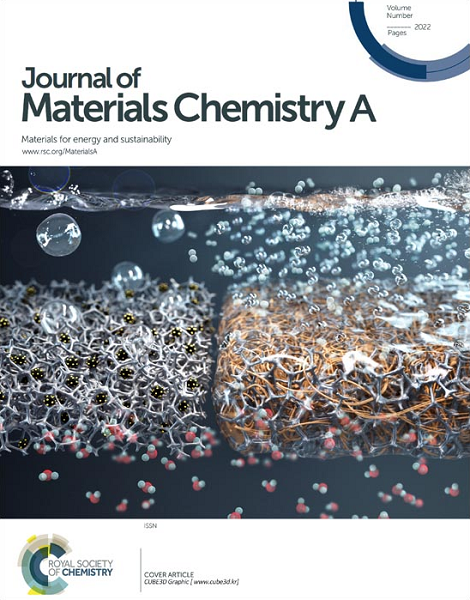基于cuo的NH3-SCO催化剂依赖载体的N2选择性的实验和理论见解
IF 10.7
2区 材料科学
Q1 CHEMISTRY, PHYSICAL
引用次数: 0
摘要
氨(NH3- sco)选择性催化氧化成无害的N2(代替污染物NOx和温室气体N2O)是一种很有前途的去除污染物NH3的技术。基于cuo的NH3-SCO催化剂因其在催化性能和成本上的优势而引起了广泛的研究兴趣,但载体材料对产物选择性的影响尚不清楚,阻碍了高n2选择性催化剂的发展。本文采用不同金属氧化物载体的CuO/MOx (M = Ti, Zr和Ce)催化剂进行了实验和理论结合研究,以从分子水平上理解NH3-SCO中的载体效应。原位光谱和理论计算表明,这些催化剂对N2选择性的变化源于它们对竞争反应途径的不同偏好。结果表明,载体材料对CuOx活性位点的局部配位环境有调节作用。这种活性位-载体相互作用可以改变关键元素反应(N2H4*生成和NH2*脱氢)的能垒,从而导致不同的产物选择性。发现了这些关键元素反应的能垒与两个易于计算的描述符(关键中间体的结合强度或反应能)之间的标度关系,从而避免了耗时的过渡态搜索过程,使高n2选择性NH3-SCO催化剂的合理设计和快速筛选成为可能。本文章由计算机程序翻译,如有差异,请以英文原文为准。

Experimental and theoretical insights into the support-dependent N2 selectivity of CuO-based NH3-SCO catalysts
Selective catalytic oxidation of ammonia (NH3-SCO) into harmless N2 (instead of pollutant NOx and greenhouse gas N2O) is a promising technique for the removal of pollutant NH3. The CuO-based NH3-SCO catalyst has attracted significant research interest owing to its advantages in catalytic performance and cost, but it is still elusive how support material affects product selectivity, hindering the development of highly N2-selective catalysts. Herein, we present a combined experimental and theoretical study using CuO/MOx (M = Ti, Zr, and Ce) catalysts with different metal oxide supports to provide molecular-level understanding of support effects in NH3-SCO. In situ spectroscopy and theoretical calculations revealed that variations in N2 selectivity of these catalysts originated from their diverse preferences to competing reaction pathways. It was observed that the local coordination environments of the CuOx active sites were tuned by the support material. This active site–support interaction could alter the energy barriers of key elementary reactions (N2H4* formation and NH2* dehydrogenation), resulting in different product selectivity. Scaling relationships between the energy barriers of these key elementary reactions and two easily computed descriptors (the binding strength of key intermediates or reaction energies) were discovered, which could avoid the time-consuming process of transition state searching and enable rational design and fast screening of highly N2-selective NH3-SCO catalysts.
求助全文
通过发布文献求助,成功后即可免费获取论文全文。
去求助
来源期刊

Journal of Materials Chemistry A
CHEMISTRY, PHYSICAL-ENERGY & FUELS
CiteScore
19.50
自引率
5.00%
发文量
1892
审稿时长
1.5 months
期刊介绍:
The Journal of Materials Chemistry A, B & C covers a wide range of high-quality studies in the field of materials chemistry, with each section focusing on specific applications of the materials studied. Journal of Materials Chemistry A emphasizes applications in energy and sustainability, including topics such as artificial photosynthesis, batteries, and fuel cells. Journal of Materials Chemistry B focuses on applications in biology and medicine, while Journal of Materials Chemistry C covers applications in optical, magnetic, and electronic devices. Example topic areas within the scope of Journal of Materials Chemistry A include catalysis, green/sustainable materials, sensors, and water treatment, among others.
 求助内容:
求助内容: 应助结果提醒方式:
应助结果提醒方式:


